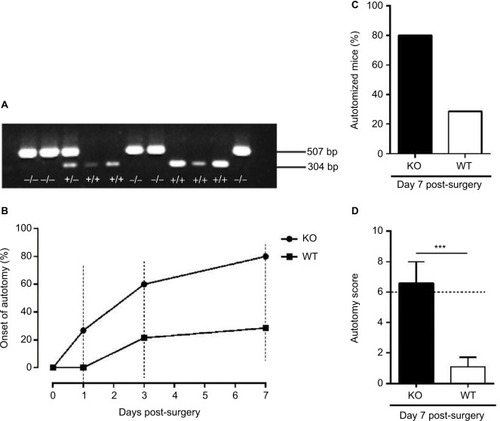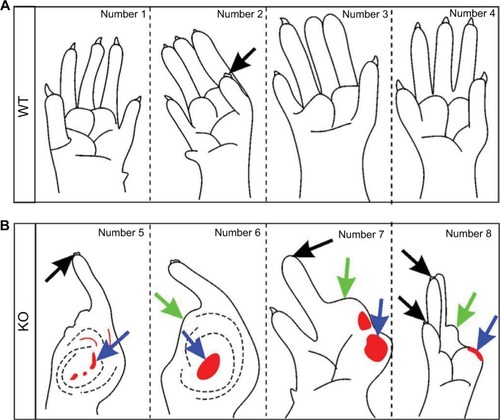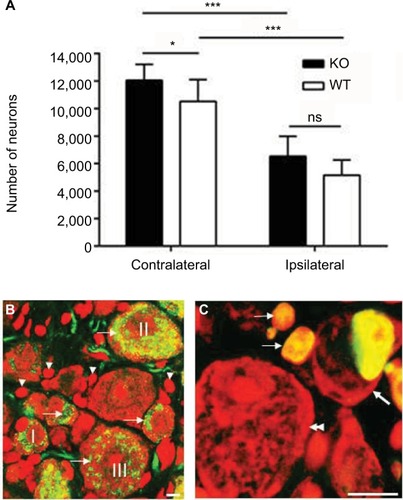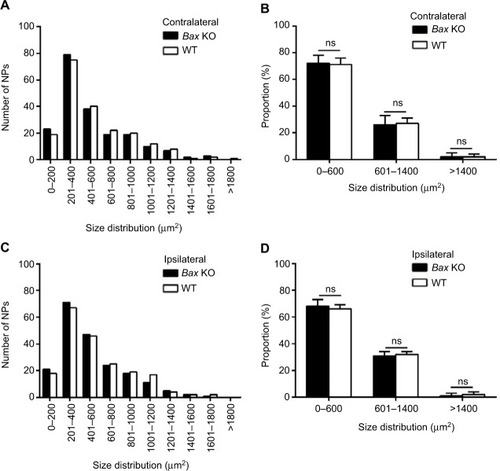Figures & data
Figure 1 Genotyping and autotomy evaluation after axotomy.
Abbreviations: KO, knockout; PCR, polymerase chain reaction; WT, wild-type.

Figure 2 Autotomy detected 7 days after axotomy.
Abbreviations: KO, knockout; WT, wild-type.

Figure 3 Neuronal number of L5 DRGs 1 month after axotomy.
Abbreviations: CGRP, calcitonin gene-related peptide; DRG, dorsal root ganglion; KO, knockout; L5, lumbar-5; NPs, neuron profiles; ns, no significance; PI, propidium iodide; TUNEL, terminal deoxynucleotidyl transferase-mediated dUTP nick-end labeling; WT, wild-type.

Figure 4 Soma size distribution of DRG NPs 1 month after axotomy.
Abbreviations: DRG, dorsal root ganglion; KO, knockout; NPs, neuron profiles; ns, no significance; WT, wild-type.

